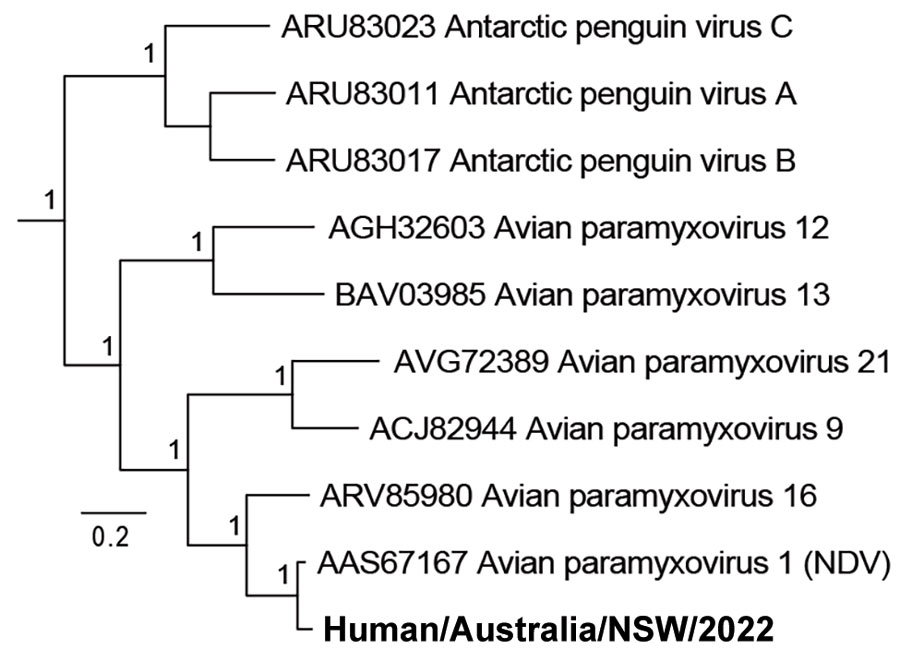Volume 29, Number 12—December 2023
Research
Fatal Human Neurologic Infection Caused by Pigeon Avian Paramyxovirus-1, Australia
Figure 4

Figure 4. Phylogenetic classification of avian paramyxovirus type 1 strain from an immunocompromised child in Australia (bold) using the large polymerase protein sequence. Node support values show Shimodaira-Hasegawa—like approximate likelihood ratio test statistics with branch lengths proportional to the scale. GenBank accession numbers are provided for reference sequences. Scale bar indicates number of substitutions per site.
1These first authors contributed equally to this article.
2These senior authors contributed equally to this article.
Page created: November 13, 2023
Page updated: November 18, 2023
Page reviewed: November 18, 2023
The conclusions, findings, and opinions expressed by authors contributing to this journal do not necessarily reflect the official position of the U.S. Department of Health and Human Services, the Public Health Service, the Centers for Disease Control and Prevention, or the authors' affiliated institutions. Use of trade names is for identification only and does not imply endorsement by any of the groups named above.